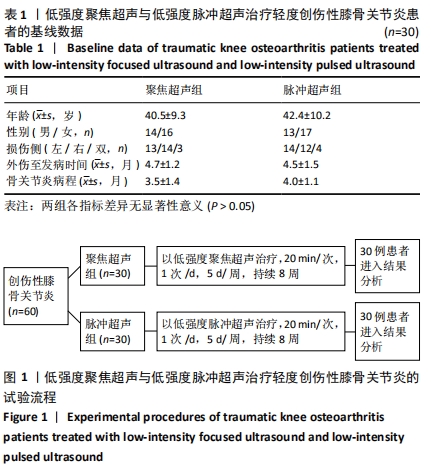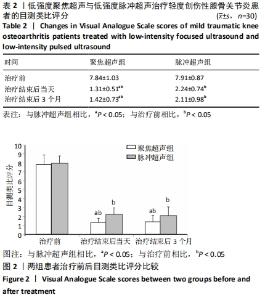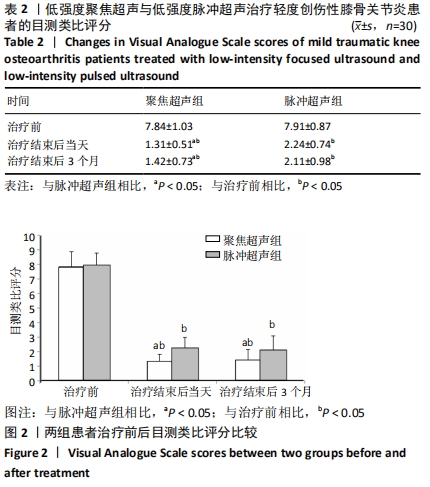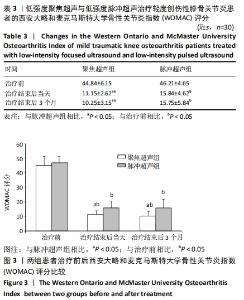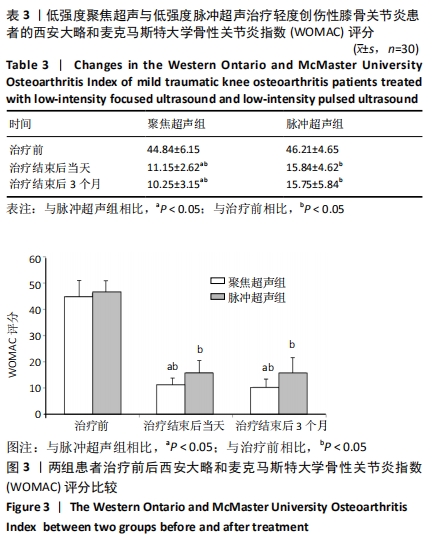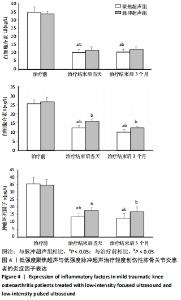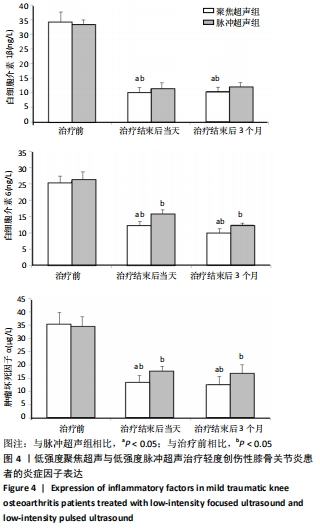[1] KORNAH BA, SAFWAT HM, ABDEL-HAMEED SK, et al. Managing of post-traumatic knee arthritis by total knee arthroplasty: case series of 15 patients and literature review. J Orthop Surg Res. 2019;14(1):168.
[2] MARTÍN-HERNÁNDEZ C, FLORÍA-ARNAL LJ, GÓMEZ-BLASCO A, et al. Metaphyseal sleeves as the primary implant for the management of bone defects in total knee arthroplasty after post-traumatic knee arthritis. Knee. 2018;25(4):669-675.
[3] 瞿晓东,周敬杰,翟宏伟,等.运动针法与整骨疗法治疗创伤性膝关节炎的疗效观察[J].中国骨伤,2019,32(6):493-497.
[4] 韩广弢,李皓桓,高冯.创伤后膝骨关节炎发展中前交叉韧带损伤的作用与意义[J].中国组织工程研究,2020,24(15):2440-2446.
[5] BURKHART KJ, HOLLINGER B. Post-traumatic arthritis in the young patient: Treatment options before the endoprosthesis. Orthopade. 2016;45(10):832-843.
[6] ZHANG K, JIANG Y, DU J, et al. Comparison of distraction arthroplasty alone versus combined with arthroscopic microfracture in treatment of post-traumatic ankle arthritis. J Orthop Surg Res. 2017;12(1):45.
[7] UDDIN SMZ, KOMATSU DE. Therapeutic Potential Low-Intensity Pulsed Ultrasound for Osteoarthritis: Pre-clinical and Clinical Perspectives. Ultrasound Med Biol. 2020;46(4):909-920.
[8] HARRISON A, LIN S, POUNDER N, et al. Mode & mechanism of low intensity pulsed ultrasound (LIPUS) in fracture repair. Ultrasonics. 2016; 70:45-52.
[9] 谭显春,李智,李欣,等.低强度脉冲聚焦超声治疗对膝骨关节炎患者疼痛和关节功能的改善作用及其安全性[J].临床和实验医学杂志, 2020,19(5):541-544.
[10] 成逸,徐艳,王飞.低强度脉冲超声缓解膝骨关节炎疼痛与修复关节软骨损伤研究[J].中国现代医生,2019,57(25):32-35.
[11] 梁丹丹,胡帅,陈锦云,等.低强度聚焦超声缓解慢性软组织损伤疼痛的多中心研究[J].中国疼痛医学杂志,2020,26(1):48-52.
[12] JIA L, WANG Y, CHEN J, et al. Efficacy of focused low-intensity pulsed ultrasound therapy for the management of knee osteoarthritis: a randomized, double blind, placebo-controlled trial. Sci Rep. 2016;6: 35453.
[13] JIA L, CHEN J, WANG Y, et al. Focused Low-intensity Pulsed Ultrasound Affects Extracellular Matrix Degradation via Decreasing Chondrocyte Apoptosis and Inflammatory Mediators in a Surgically Induced Osteoarthritic Rabbit Model. Ultrasound Med Biol. 2016;42(1):208-219.
[14] 中华医学会骨科学分会关节外科学组.骨关节炎诊疗指南(2018年版)[J].中华骨科杂志,2018,38(12):705-715.
[15] HELLER GZ, MANUGUERRA M, CHOW R. How to analyze the Visual Analogue Scale: Myths, truths and clinical relevance. Scand J Pain. 2016;13:67-75.
[16] SHEN ZD, YU HM, WANG JT, et al. Modified Western Ontario and McMaster University Osteoarthritis Index Scale Used in Patients With Knee Osteoarthritis. Zhonghua Yi Xue Za Zhi. 2019;99(7):537-541.
[17] LEQUIN RM. Enzyme immunoassay (EIA)/enzyme-linked immunosorbent assay (ELISA). Clin Chem. 2005;51(12):2415-2418.
[18] BORTOLUZZI A, FURINI F, SCIRE CA. Osteoarthritis and its management-epidemiology, nutritional aspects and environmental factors. Autoimmun Rev. 2018;17(11):1097-1104.
[19] TANG X, WANG S, ZHAN S, et al. The prevalence of symptomatic knee osteoarthritis in China: results from the China Health and Retirement Longitudinal Study. Arthritis Rheumatol. 2016;68(3):648-653.
[20] 扈延龄,王成琪,唐胜建.膝骨性关节炎的临床综合治疗现状及进展[J].颈腰痛杂志,2005,26(3):235-237.
[21] NELSON AE. Osteoarthritis year in review 2017: clinical. Osteoarthritis Cartilage. 2018;26(3):319-325.
[22] SHERWOOD J. Osteoarthritis year in review 2018: biology. Osteoarthritis Cartilage. 2019;27(3):365-370.
[23] WHITE PF, ELVIR LAZO OL, GALEAS L, et al. Use of electroanalgesia and laser therapies as alternatives to opioids for acute and chronic pain management. F1000Res. 2017;6:2161.
[24] FU SC, SHUM WT, HUNG LK,et al. Low-intensity pulsed ultrasound on tendon healing: a study of the effect of treatment duration and treatment initiation. Am J Sports Med. 2008;36(9):1742-1749.
[25] COOK SD, SALKELD SL, PATRON LP, et al. The effect of low-intensity pulsed ultrasound on autologous osteochondral plugs in a canine model. Am J Sports Med. 2008;36(9):1733-1741.
[26] ROTHENBERG JB, JAYARAM P, NAQVI U, et al. The role of low-intensity pulsed ultrasound on cartilage healing in knee osteoarthritis: a review. PM R 2017;9(12):1268-1277.
[27] 顾春生,邓小龙,孙傲.创伤性膝关节炎的全膝关节置换效果分析[J].临床医药文献电子杂志,2019,6(56):49.
[28] 谢先泽,孟海燕,方毅.玻璃酸钠联合臭氧关节腔内注射对创伤性膝关节炎患者关节功能的影响[J].中国乡村医药,2018,25(24):9-10.
[29] ADEGOKE BOA, BOYINDE OH, ODOLE AC, et al. Do self-efficacy, body mass index, duration of onset and pain intensity determine performance on selected physical tasks in individuals with unilateral knee osteoarthritis? Musculoskelet Sci Pract. 2017;32:1-6.
[30] LERMAN SF, FINAN PH, SMITH MT, et al. Psychological interventions that target sleep reduce pain catastrophizing in knee osteoarthritis. Pain. 2017; 158(11):2189-2195.
[31] ÖZGÖNENEL L, OKUR SÇ, DOGAN YP, et al. Effectiveness of Therapeutic Ultrasound on Clinical Parameters and Ultrasonographic Cartilage Thickness in Knee Osteoarthritis: A Double-Blind Trial. J Med Ultrasound. 2018;26(4):194-199.
[32] 张延辉,高春阳,李少华.骨性关节炎患者退变软骨及滑膜组织中细胞因子的表达[J].中国组织工程研究,2013,17(37):6671-6675.
|

